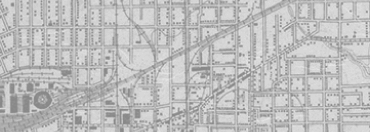


Back
Photocopy of typed response letter from Jim Bishop to Jacqueline Kennedy
Photocopy of three-paged typed response letter from Jim Bishop to Jacqueline Kennedy written on September 28, 1964, in which Bishop argues for the necessity of his book being published. The letter is three pages and is a photocopy of the original. In the letter, Jim Bishop responds directly to Mrs. Kennedy's concerns about his proposed book, "The Day Kennedy Was Shot." Jacqueline Kennedy was accustomed to carefully crafting and controlling the public image of her family, and she tried very hard to control the story of President Kennedy's death and legacy. Bishop, however, argues that this is a matter of history and that there is no controlling the story. He points out that accounts of President Kennedy's assassination "will be written, whether you stand in the doorway to history or not. They will be written whether I die this day or not. Some writers will be conscientious and careful and objective. Some will be careless, as Scotty Retson wrote on page one of this morning's Times: 'It (the Warren Commission report) has provided enough material to intrigue the novelists and dramatists for generations to come..'." Bishop concludes his argument with a personal plea to Mrs. Kennedy to not stand in the way of his publication and to treat him the same as all of the other authors writing about the President.
Photocopy of typed response letter from Jim Bishop to Jacqueline Kennedy
09/28/1964
Paper
11 × 8 1/2 in. (27.9 × 21.6 cm)
The Sixth Floor Museum at Dealey Plaza Collection
2018.071.0002
Despite Mrs. Kennedy's objections, Jim Bishop proceeded with his book, The Day Kennedy Was Shot, which was published in 1968. - Stephanie Allen-Givens, Collections and Exhibits Manager
Jim Bishop (1907-87) started his journalistic career at the New York Daily Mirror in 1930. He would go on to serve as associate editor of Collier's Magazine, executive editor of Liberty Magazine and a longtime columnist with King Features Syndicate, though by the 1950s he was primarily recognized as a best-selling author. In addition to a series of religious titles, his 1955 examination of the Lincoln assassination, The Day Lincoln Was Shot, sold more than 3 million copies. He continued his focus on the presidency the following year with a Cosmopolitan article, "A Day with Dwight D. Eisenhower." He had just completed the manuscript for the book, A Day in the Life of President Kennedy, ten days before the assassination. The book was published the following year and was one of the top ten books in sales for 1964. A follow-up title, A Day in the Life of President Johnson, was published in 1967. Some four years after his correspondence with Mrs. Kennedy, Bishop's The Day Kennedy Was Shot was finally published in 1968. As of 2020, the book remains in print more than half a century later. - Stephen Fagin, Curator
Photocopy of typed response letter from Jim Bishop to Jacqueline Kennedy
Photocopy of three-paged typed response letter from Jim Bishop to Jacqueline Kennedy written on September 28, 1964, in which Bishop argues for the necessity of his book being published. The letter is three pages and is a photocopy of the original. In the letter, Jim Bishop responds directly to Mrs. Kennedy's concerns about his proposed book, "The Day Kennedy Was Shot." Jacqueline Kennedy was accustomed to carefully crafting and controlling the public image of her family, and she tried very hard to control the story of President Kennedy's death and legacy. Bishop, however, argues that this is a matter of history and that there is no controlling the story. He points out that accounts of President Kennedy's assassination "will be written, whether you stand in the doorway to history or not. They will be written whether I die this day or not. Some writers will be conscientious and careful and objective. Some will be careless, as Scotty Retson wrote on page one of this morning's Times: 'It (the Warren Commission report) has provided enough material to intrigue the novelists and dramatists for generations to come..'." Bishop concludes his argument with a personal plea to Mrs. Kennedy to not stand in the way of his publication and to treat him the same as all of the other authors writing about the President.
Photocopy of typed response letter from Jim Bishop to Jacqueline Kennedy
09/28/1964
Letters
Author
Kennedy, John F.
Kennedy, Jacqueline
Bishop, Jim
Manchester, William
Warren Commission
Warren Report
New York
Paper
11 × 8 1/2 in. (27.9 × 21.6 cm)
The Sixth Floor Museum at Dealey Plaza Collection
2018.071.0002
Despite Mrs. Kennedy's objections, Jim Bishop proceeded with his book, The Day Kennedy Was Shot, which was published in 1968. - Stephanie Allen-Givens, Collections and Exhibits Manager
Jim Bishop (1907-87) started his journalistic career at the New York Daily Mirror in 1930. He would go on to serve as associate editor of Collier's Magazine, executive editor of Liberty Magazine and a longtime columnist with King Features Syndicate, though by the 1950s he was primarily recognized as a best-selling author. In addition to a series of religious titles, his 1955 examination of the Lincoln assassination, The Day Lincoln Was Shot, sold more than 3 million copies. He continued his focus on the presidency the following year with a Cosmopolitan article, "A Day with Dwight D. Eisenhower." He had just completed the manuscript for the book, A Day in the Life of President Kennedy, ten days before the assassination. The book was published the following year and was one of the top ten books in sales for 1964. A follow-up title, A Day in the Life of President Johnson, was published in 1967. Some four years after his correspondence with Mrs. Kennedy, Bishop's The Day Kennedy Was Shot was finally published in 1968. As of 2020, the book remains in print more than half a century later. - Stephen Fagin, Curator











